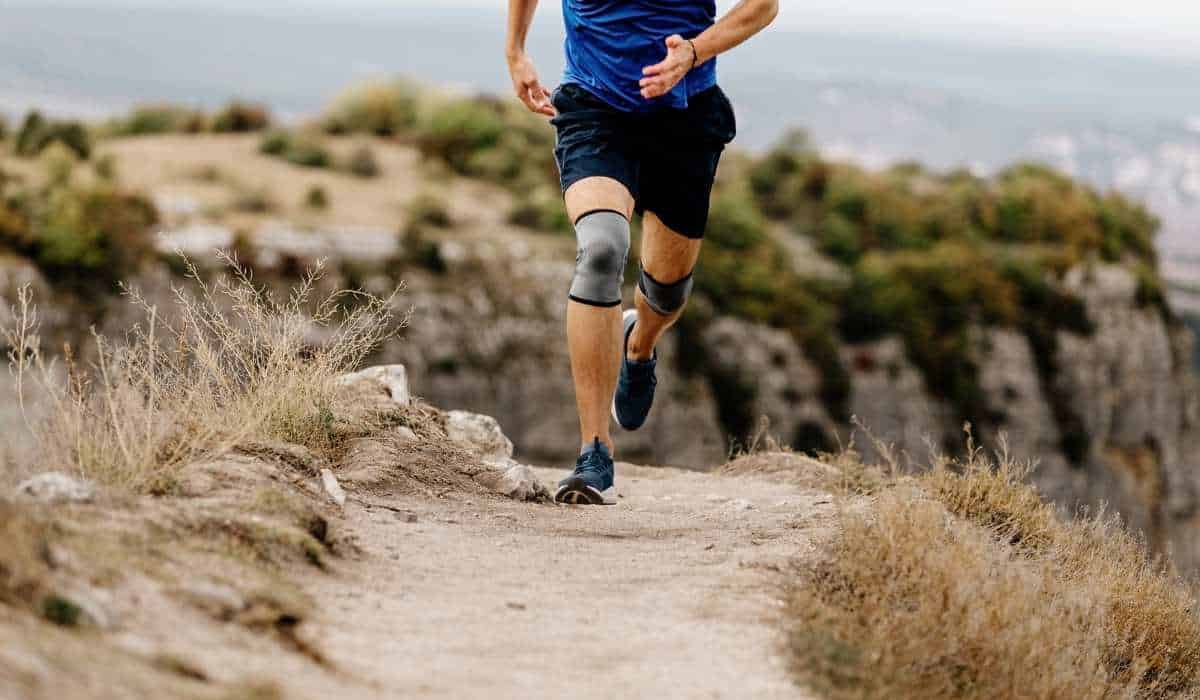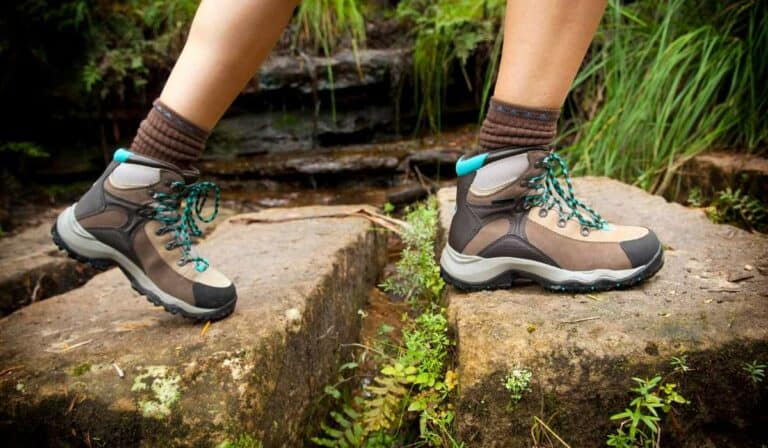Best Knee Sleeve for Hiking: Comprehensive Guide & Reviews
Discovering the best knee sleeve for hiking is essential for anyone looking to enhance their outdoor adventures while prioritizing joint health and comfort. In this comprehensive guide, we delve into various aspects of selecting the perfect knee sleeve to suit your needs and ensure a pain-free hiking experience.
We will discuss what factors you should consider when searching for a high-quality knee sleeve, as well as the benefits of wearing one during your hikes. To aid in your search for the ideal knee sleeve, we provide information on the different types available and how to select one based on your individual needs.
In addition to our top recommendations for the best knee sleeves for hiking, we also offer valuable care and maintenance tips to prolong their lifespan. Finally, we address frequently asked questions related to using these supportive accessories during your treks in nature. So embark with us on this journey towards finding the ideal solution that caters to both protection and performance in equal measure.
Table of Contents
What to Look for in a Knee Sleeve for Hiking

For a successful and comfortable hike, it’s essential to invest in the best knee sleeve that can support your body. In this section, we’ll explore the advantages of utilizing superior knee sleeves that can help make your hiking journey more pleasant.
Material & Breathability
The material used in a knee sleeve should be both comfortable and durable. Look for materials like neoprene or spandex that offer great backing while being light and able to breathe. A good knee sleeve will wick away moisture, keeping your skin dry even during intense hikes.
Compression & Support
A key feature of any high-quality knee sleeve is its ability to provide compression and support without restricting movement. The right level of compression helps improve blood circulation, reduce inflammation, and prevent injuries such as strains or sprains.
- Mild Compression: Suitable for those who need minimal support or are new to using knee sleeves.
- Moderate Compression: Ideal for hikers with mild-to-moderate joint pain or instability issues.
- Firm Compression: Recommended if you’re recovering from an injury or suffer from chronic pain due to arthritis or other conditions.
Sizing & Fit
To ensure maximum effectiveness, it’s important that your chosen knee sleeve fits correctly. Most manufacturers provide sizing charts based on measurements of your thigh, knee, and calf. Make sure to measure these areas accurately before purchasing a sleeve.
Design & Style
Knee sleeves come in various designs and styles that cater to different preferences. Some hikers prefer open patella designs for increased flexibility and breathability, while others opt for closed patella versions for additional support. Opt for the style that best fits your requirements and individual preference.
Price & Warranty
Last but not least, consider the price of the knee sleeve as well as any warranty offered by the manufacturer. Affordable options with great features abound, so you don’t have to stretch your budget too far. Additionally, look out for warranties or guarantees provided by manufacturers as they can offer peace of mind regarding product durability.
Now that we’ve covered what to look for in a knee sleeve, let’s move on to exploring their benefits during hiking adventures.
When looking for a knee sleeve for hiking, it is important to consider the type of material used, breathability and comfort level. Additionally, it’s beneficial to look into features such as compression technology or extra padding in order to ensure maximum support and protection while on the trail. Moving on from this point, let us explore the benefits of wearing a knee sleeve while hiking.
The Key Takeaway:
Investing in the best knee sleeve for hiking is crucial to ensure your knees are supported during outdoor adventures. Look for features such as material and breathability, compression and support, sizing and fit, design and style, price, and warranty when choosing a knee sleeve. A good knee sleeve will provide comfort, durability, and flexibility while reducing inflammation or preventing injuries such as strains or sprains.
Click here to read about Best Hiking in Bora Bora
Benefits of Wearing a Knee Sleeve While Hiking
Exploring the outdoors through hiking can be a grueling experience, especially for your knees. That’s where knee sleeves come in. These handy accessories offer numerous benefits that make hiking more enjoyable and comfortable for all levels of adventurers. Let’s dive into some of the key advantages:
Improved Joint Stability & Support
Knee sleeves provide additional support and stability to your knee joint by applying gentle compression around the area. This helps reduce stress on ligaments, tendons, and muscles while you hike, making it easier to navigate uneven terrain without worrying about potential injuries.
Pain Relief & Reduced Swelling
The compression provided by knee sleeves can help alleviate pain caused by conditions such as arthritis or tendonitis during long hikes. Additionally, this same compression aids in reducing inflammation and swelling after strenuous activity – meaning you’ll recover faster from those epic treks.
Injury Prevention
- Muscle Warmth: The snug fit of a knee sleeve helps retain heat around your joints, keeping them warm throughout your hike. This warmth reduces stiffness and improves flexibility which may prevent muscle strains or tears.
- Better Alignment: By providing additional support to the patella (kneecap), knee sleeves encourage proper alignment during movement – minimizing wear-and-tear on cartilage over time.
- Safety Reminder: Wearing a knee sleeve serves as a constant reminder to pay attention to how you’re moving when hiking – encouraging safer techniques like bending at the knees instead of the waist when navigating obstacles.
Enhanced Performance & Confidence
Knowing that your knees are well-supported can give you a mental boost, allowing you to tackle more challenging trails with confidence. Plus, knee sleeves may even improve overall performance by promoting better circulation and oxygen delivery to muscles – helping you power through those tough climbs.
In summary, wearing a knee sleeve while hiking offers numerous benefits that make it an essential accessory for any outdoor enthusiast. From improved joint stability and support to injury prevention and enhanced performance, these simple yet effective devices can help ensure that your hikes are both enjoyable and safe.
Exploring the great outdoors can be a lot more enjoyable when you have protection from external elements and are safeguarded against any potential injuries – this is why donning a knee sleeve for your hike is an absolute must. Moving on, let’s take a look at the different types of knee sleeves available for hikers.
The Key Takeaway:
Knee sleeves are a must-have accessory for hikers, providing improved joint stability and support, pain relief, reduced swelling, injury prevention through muscle warmth, and better alignment. They also enhance performance and confidence by promoting better circulation to muscles during tough climbs.
Types of Knee Sleeves Available

When it comes to picking the ideal knee sleeve for your trekking experiences, you’ll discover that there is a range of styles accessible nowadays. Each type offers unique features and benefits tailored to different needs and preferences. Let’s explore some of the most popular types of knee sleeves:
- Compression Knee Sleeves: These are designed to provide consistent compression around your entire knee joint, helping improve blood circulation and reduce inflammation during physical activities like hiking. Compression sleeves can be made from materials such as neoprene or spandex, offering varying levels of support and breathability.
- Hinged Knee Sleeves: Hinged sleeves offer more stability than their compression counterparts by incorporating flexible hinges on either side of the knee joint. This design allows for a greater range of motion while still providing ample support against lateral movements – making them ideal for those with existing knee injuries or instability issues.
- Knee Straps & Bands: Unlike full-length sleeves, these smaller straps wrap just below or above the kneecap to target specific areas prone to injury such as patellar tendonitis (jumper’s knee) or iliotibial band syndrome (ITBS). They’re lightweight and less restrictive compared to other options but may not provide enough overall support for long hikes.
- Sleeve/Brace Combos: Some products combine elements from both compression sleeves and hinged braces into one versatile solution that caters specifically towards athletes who require extra protection without sacrificing mobility in their outdoor pursuits.
In addition to these main categories, you might also come across specialized designs tailored towards particular conditions like arthritis relief or post-surgery recovery assistance. Ultimately, the best knee sleeve for hiking will depend on your individual needs and preferences – so take some time to research each type before making a decision.
No matter what type of knee sleeve you choose, make sure it is comfortable and supportive for your specific needs. Selecting the optimal knee sleeve can be challenging; yet, recognizing how to choose the right one for you will help guarantee that your outdoor pursuits are maximized.
The Key Takeaway:
There are various types of knee sleeves available for hiking, including compression knee sleeves, hinged knee sleeves, knee straps and bands, and sleeve/brace combos. It is essential to assess every type of knee sleeve prior to choosing the best one for you, as each offers distinct characteristics that are suitable for various requirements and inclinations.
Click here to read about Best Hiking Boots for Overpronation
How to Choose the Right Knee Sleeve for Your Needs
Finding the perfect knee sleeve for your hiking adventures can be a bit overwhelming with so many options available on the market. But don’t worry. Let us guide you in choosing the ideal knee sleeve for your hiking adventures. Here are some tips and advice on selecting the best knee sleeve:
Consider Your Hiking Intensity
The type of hikes you typically embark on will play a significant role in determining which knee sleeve is suitable for you. If you mostly go on casual, low-intensity hikes, a lightweight and breathable knee sleeve should suffice. However, if you often tackle more challenging terrains or long-distance treks, consider investing in a heavy-duty knee sleeve that offers additional support and protection.
Choose The Right Material
Knee sleeves come in various materials such as neoprene, spandex, nylon, or even bamboo fibers. Each material has unique properties that cater to different preferences:
- Neoprene: Provides excellent compression and warmth but may not be as breathable.
- Nylon/Spandex blend: Offers great breathability while still providing adequate support.
- Bamboo fiber: A natural option known for its moisture-wicking capabilities and softness against the skin.
Determine The Level Of Support Needed
Knee sleeves vary in their level of support from mild to moderate or advanced stabilization depending on factors like thickness (measured in millimeters) or added features like straps or hinges.
- Mild support: Suitable for those who need minimal assistance during hikes; usually thinner and more flexible.
- Moderate support: Ideal for those who require additional stability without restricting mobility; often thicker with added features like straps or gel pads.
- Advanced stabilization: Designed for individuals with existing knee issues or severe pain; may include hinges, extra padding, or rigid materials to provide maximum protection.
Ensure A Proper Fit
A well-fitting knee sleeve is crucial for optimal performance. To ensure you get the right size, measure your leg circumference at two points:
- About four inches above the center of your kneecap (thigh measurement).
- The center of your calf muscle (calf measurement).
Use these measurements to consult the manufacturer’s sizing chart and select a suitable size. Remember that each brand might have slightly different sizing guidelines, so always double-check before purchasing.
Read Reviews And Seek Recommendations
Last but not least, don’t forget to read customer reviews and seek recommendations from fellow hikers. Their experiences can give you valuable insights into which knee sleeves work best in real-life situations. You can also join online forums or social media groups dedicated to hiking enthusiasts where members share their favorite gear suggestions.
Considering all the pertinent information will assist you in selecting a knee sleeve that meets your requirements. Happy hiking.
Choosing the right knee sleeve for your needs can make all the difference in having an enjoyable and safe hiking experience. For the optimal hiking experience, peruse our reviews and comparisons of several premier knee sleeves currently available.
The Key Takeaway:
When choosing a knee sleeve for hiking, consider the intensity of your hikes and choose the right material that suits you. Determine the level of support needed and ensure a proper fit by measuring your leg circumference at two points. Lastly, read reviews and seek recommendations from fellow hikers to make an informed decision when selecting the perfect knee sleeve for your needs.
Best Knee Sleeves for Hiking: Reviews & Comparisons

In order to make a wise investment in a knee sleeve for hiking, it is essential to find one that offers the ideal combination of support, comfort, and longevity. To help you make the best decision, we’ve gathered a selection of some of the highest-rated knee sleeves available.
a) UFlex Athletics Knee Compression Sleeve
The UFlex Athletics Knee Compression Sleeve is designed with 3D knitting technology that offers targeted compression and support around your entire knee joint. This lightweight sleeve features anti-slip silicone grips to keep it securely in place during long hikes. The moisture-wicking fabric ensures your skin stays dry while providing optimal breathability.
b) McDavid 401 Neoprene Knee Support Brace
McDavid’s 401 Neoprene Knee Support Brace is made from high-quality neoprene material that delivers therapeutic warmth and compression to alleviate pain caused by arthritis or tendonitis. Its open patella design allows a full range of motion while offering added stability during your outdoor adventures.
c) Bauerfeind Sports Knee Support
The Bauerfeind Sports Knee Support boasts medical-grade compression technology designed specifically for athletes who engage in high-intensity activities like hiking or trail running. Its anatomically contoured design ensures a secure fit, while the Air Knit fabric provides excellent breathability and moisture management.
d) PowerLix Compression Knee Sleeve
With its 4-way stretch capability, the PowerLix Compression Knee Sleeve offers exceptional support without restricting your movement. The sleeve’s special knitted technical design helps reduce inflammation and swelling during hikes. Additionally, it features a double silicone anti-slip wave to keep it in place throughout your journey.
e) Mava Sports Knee Support Sleeves (Pair)
Mava Sports’ Knee Support Sleeves are designed with an anatomical shape that adapts to the contour of your knee for maximum comfort and support. Made from bamboo charcoal fiber material, these sleeves offer superior breathability while wicking away sweat effectively. They come as a pair so you can protect both knees during long treks.
To choose the best knee sleeve for hiking among these top-rated options, consider factors such as the level of compression needed, desired materials or fabrics used in construction, and specific features like anti-slip grips or open patella designs that cater to individual preferences or requirements.
Having the right knee sleeve for hiking can make a huge difference in your comfort and performance on the trail. For the maximum gain from your purchase, it is essential to be aware of the best ways to look after and sustain your knee sleeve.
The Key Takeaway:
Looking for the best knee sleeve for hiking? Check out our list of top-rated options, including the UFlex Athletics Knee Compression Sleeve with 3D knitting technology and anti-slip silicone grips, McDavid’s Neoprene Knee Support Brace with therapeutic warmth and compression.
Consider factors such as the level of compression needed and desired materials or features like anti-slip grips to choose the right one for you.
Click here to read about Best Hiking Shoes for Hawaii (2023 Guide)
Care & Maintenance Tips for Your Knee Sleeve

Taking proper care of your knee sleeve is essential to ensure its longevity and effectiveness while hiking. By following these simple tips, you can keep your knee sleeve in top condition so it continues to provide the support and protection you need on the trail.
A. Cleaning Your Knee Sleeve
- Hand wash: It’s best to hand wash your knee sleeve using mild soap and cold water. This will help maintain its elasticity and prevent damage from harsh chemicals or high temperatures found in washing machines.
- Rinse thoroughly: Make sure to rinse off all soap residue after washing, as leftover soap can cause skin irritation or break down the material over time.
- Air dry: Lay your knee sleeve flat or hang it up to air dry, avoiding direct sunlight which may cause fading or weaken the fabric. Avoid using a dryer as this could shrink or damage the material.
B. Storing Your Knee Sleeve Properly
To prevent deformation and maintain its shape, store your knee sleeve by folding it neatly rather than crumpling it up when not in use. Keep it away from direct heat sources like radiators, as excessive heat can affect its elasticity over time.
C. Regular Inspection for Wear & Tear
Your knee sleeves are designed for durability, but regular inspection is necessary to check for signs of wear that might compromise their performance during hikes, such as fraying seams, loose threads, tears, or holes forming in the fabric. Healthline suggests replacing your knee sleeve if it shows any of these signs or no longer provides the support you need.
D. Rotating Between Multiple Knee Sleeves
If you hike frequently, consider investing in multiple knee sleeves and rotating their use to extend their lifespan. This will give each sleeve time to recover its elasticity between uses and prevent overstretching from constant wear.
By following these care and maintenance tips, you can ensure that your knee sleeve remains an effective hiking companion for many adventures to come.
Taking care of your knee sleeve helps to ensure it lasts and provides the best support while hiking. Therefore, understanding how to properly maintain it is key to a successful outdoor adventure. In this next section, we will discuss some frequently asked questions about using knee sleeves when going on hikes.
The Key Takeaway:
To ensure the longevity and effectiveness of your knee sleeve while hiking, it’s important to take proper care of it. This includes hand washing with mild soap and cold water, air drying away from direct sunlight, storing neatly folded away from heat sources, regularly inspecting for wear and tear, and rotating between multiple sleeves if you hike frequently. By following these tips, you can keep your knee sleeve in top condition for many adventures to come.
FAQs About Knee Sleeves For Hiking

For those unfamiliar with knee sleeves for hiking, we’ll provide answers to common questions about their use and benefits. In this area, we’ll address a few commonly posed inquiries to help elucidate any confusion.
Do I really need a knee sleeve for hiking?
The decision to wear a knee sleeve while hiking depends on your individual needs and preferences. Some hikers find that wearing a knee sleeve provides extra support, stability, and comfort during long hikes or when carrying heavy loads. If you have experienced previous knee injuries or suffer from chronic pain, using a knee brace might be beneficial in preventing further damage.
Can I wear my regular workout compression sleeves for hiking?
You can certainly try wearing your regular workout compression sleeves for hiking; however, they may not provide the same level of support as those specifically designed for outdoor activities like trekking. Hiking-specific knee sleeves are often made with more durable materials that can withstand rough terrain and offer better moisture-wicking properties to keep your legs dry during intense activity.
How tight should my knee sleeve be?
- A good rule of thumb is that your knee sleeve should fit snugly without causing discomfort or restricting blood flow.
- To ensure proper sizing, measure the circumference of your leg approximately four inches above the center of your kneecap and consult the manufacturer’s size chart before purchasing.
- If you find yourself between sizes or unsure which size would work best for you, it’s generally recommended to size down for more compression and support.
Can I wear a knee sleeve over or under my hiking pants?
You can wear your knee sleeve either over or under your hiking pants, depending on personal preference. Some hikers may opt to don their knee sleeves beneath their trousers for extra protection from the elements, while others could feel more at ease with them on top of their apparel. Ultimately, choose whichever option feels best for you and allows you to move freely without any restrictions.
How often should I replace my knee sleeve?
It’s dependent on usage, care habits, material quality, and how long a knee sleeve lasts. Generally speaking, if you notice that your knee sleeve is no longer providing adequate support or has become stretched out and less effective at compressing your leg muscles, it may be time to consider replacing it with a new one.
We hope this FAQ section has helped answer some common questions about using knee sleeves while hiking. Remember that every individual’s needs are different – so experiment with various options until you find what works best for your specific situation.
The Key Takeaway:
The FAQs section on knee sleeves for hiking provides answers to commonly asked questions about their use and benefits. It covers topics such as the need for a knee sleeve, using regular workout compression sleeves, sizing, wearing them over or under clothing, and when to replace them. The key takeaway is that every individual’s needs are different – so experiment with various options until you find what works best for your specific situation.
Click here to read about Most Breathtaking Waterfall Hikes in Bend Oregon
FAQs about the Best Knee Sleeve for Hiking
ARE KNEE COMPRESSION SLEEVES GOOD FOR HIKING?
Yes, knee compression sleeves are beneficial for hiking as they provide support and stability, and reduce the risk of injury. They also help in improving blood circulation and reducing inflammation during long hikes. For optimal results, choose a sleeve with the right level of compression and fit.
Should I Wear a Knee Guard for Hiking?
Wearing a knee guard while hiking can be helpful if you have existing knee issues or want to prevent potential injuries. Knee guards offer additional protection compared to sleeves by providing padding around the kneecap area. However, they may restrict movement slightly more than a sleeve.
What Is the Downside of Knee Sleeves?
Some downsides of using knee sleeves include reduced mobility due to added bulkiness, potential skin irritation from prolonged use or improper fit, and dependency on them which might weaken your natural joint stability over time. It’s essential to find the right balance between support and freedom of movement.
What Is the Best Knee Sleeve on the Market?
The best knee sleeve varies depending on individual needs and preferences; however, popular options include Pro-Tec Gel Force, McDavid 4-Way Elastic, and Bauerfeind Sports Knee Support. Always consider factors like fit, compression level, material quality, and breathability when choosing a knee sleeve.
Conclusion
In conclusion, finding the best knee sleeve for hiking is essential to prevent injuries and provide support during your outdoor adventures. When choosing a knee sleeve, consider the level of compression, material quality, and size that fits you comfortably. Remember to also take care of your knee sleeve by washing it regularly and storing it properly.
At SunWaterDirt, we offer high-quality knee sleeves that are perfect for hiking enthusiasts. At SunWaterDirt, we provide hikers with the highest-quality knee sleeves to ensure optimal comfort and support during their outdoor adventures. Check out our selection today!







